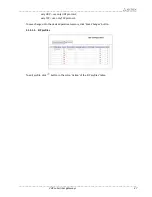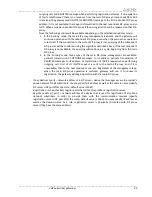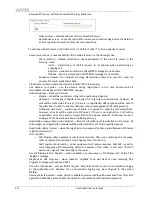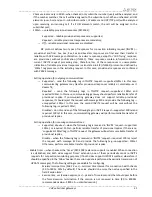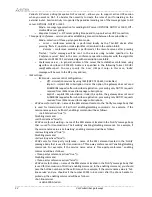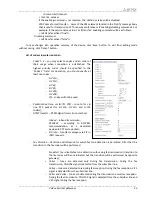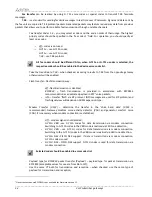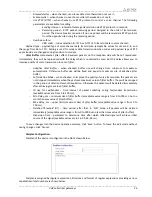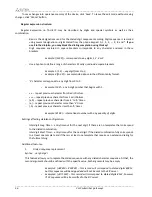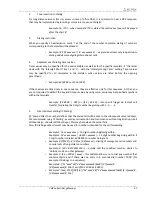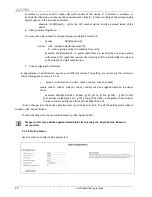
____________________________________________________________________________________
____________________________________________________________________________________
VoIP subscriber gateways
61
–
FXS profile
–
selecting user profile for subscriber line parameters. You can configure group of
parameters in the ‘
FXS profiles
’ tab. The selector value
‘
No profile
’
includes individual FXS port
settings;
–
Minimal on-hook time
–
min clearback detection time, in milliseconds. At that, this parameter
represents the max flash detection time;
–
Min flash time
– min time of flash detection, in ms;
–
Gain receive (x0.1dB)
–
received signal gain (transmitted into the phone handset), measurement
unit—0.1dB;
–
Gain transmit (x0.1dB)
–
transmitted signal gain (received by the phone handset microphone),
measurement unit—0.1dB;
–
Min pulse
–
configuration is required for pulse dialling mode;
–
Interdigit
–
configuration is required for pulse dialling mode;
–
Caller-ID generation
– select mode for Caller ID generation. Subscriber phone should support
competent method for Caller ID operation:
Off
– Caller ID is disabled;
DTMF
– DTMF Caller ID method. The number is served between the first and second calls
on the line by dual-frequency DTMF;
FSK BELL 202, FSK V.23
– FSK Caller ID method (using BELL 202 standard, or ITU-T V.23).
The number is served between the first and second calls on the line by a data stream with
a frequency modulation;
To enable Caller ID information reception, connected phone unit should support
the configured Caller ID method.
In FSK BELL 202 and FSK V.23 modes, Caller ID information is sent in SDMF format:
time/data and number.
–
Hangup timeout, sec
– dialing timeout for the first digit of a number. When there is no dialing
during the specified time, 'busy' tone will be sent to the subscriber, and the dialing will end;
–
Ringback timeout, sec
–
'busy' tone timeout for the subscriber. If the subscriber doesn't put the
phone onhook until the timeout expires, an error tone will be sent into the line;
–
Busy timeout, sec
–
launches when an incoming call is received and defines the maximum call
response time. When the defined timeout expires, 'busy' tone will be sent to the remote
subscriber;
–
Payphone
– port operates in payphone mode:
Off
– normal mode, paypnone is disabled;
Polarity reversal
– payphone operation mode with polarity reversal. Perform line power
polarity reversal on subscriber's response, and return it to original state on;
12 kHz
–
when there is an outgoing call, tariff pulse with 12 kHz frequency will be sent in
the line one time per second;
16 kHz
– when there is an outgoing call, tariff pulse with 16 kHz frequency will be sent in
the line one time per second;
Automatic gain at the reception (Rx AGC)
– when checked, received signal will be amplified up to
specified level (max gain is +/- 15 dB), otherwise gain is not enabled;
Retrain margin of signal reception (Rx AGC level
) – identify retrain margin for received
analogue signal gain (available values are -25, -22, -19, -16, -13, -10, -7, -4, -1 dB).
Automatic gain at the transmission (Tx AGC)
– when flag is set, transmitted signal will be amplified
up to specified level (max gain is +/-15dB), otherwise gain is not applied;
Retrain margin of signal transmission (Tx AGC level)
– identify retrain margin to amplify
analogue signal of transmission (available values are -25, -22, -19, -16, -13, -10, -7, -4, -1
dB).

